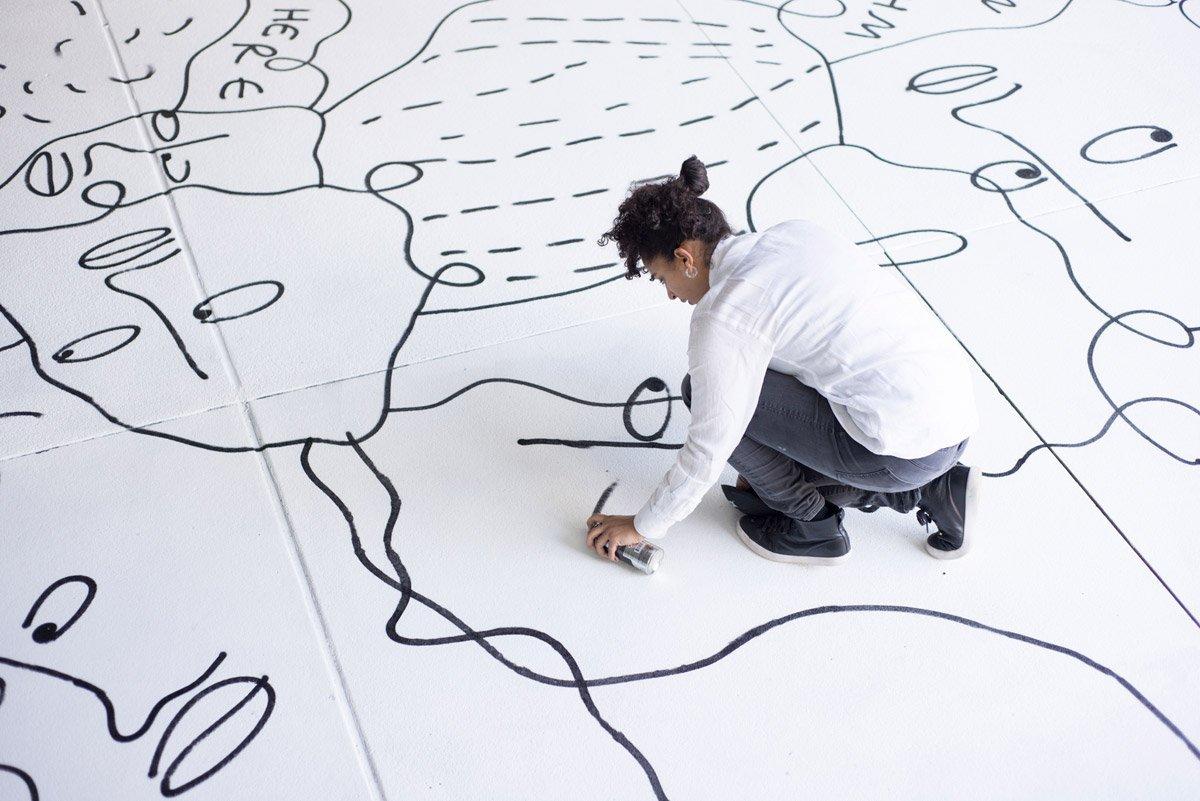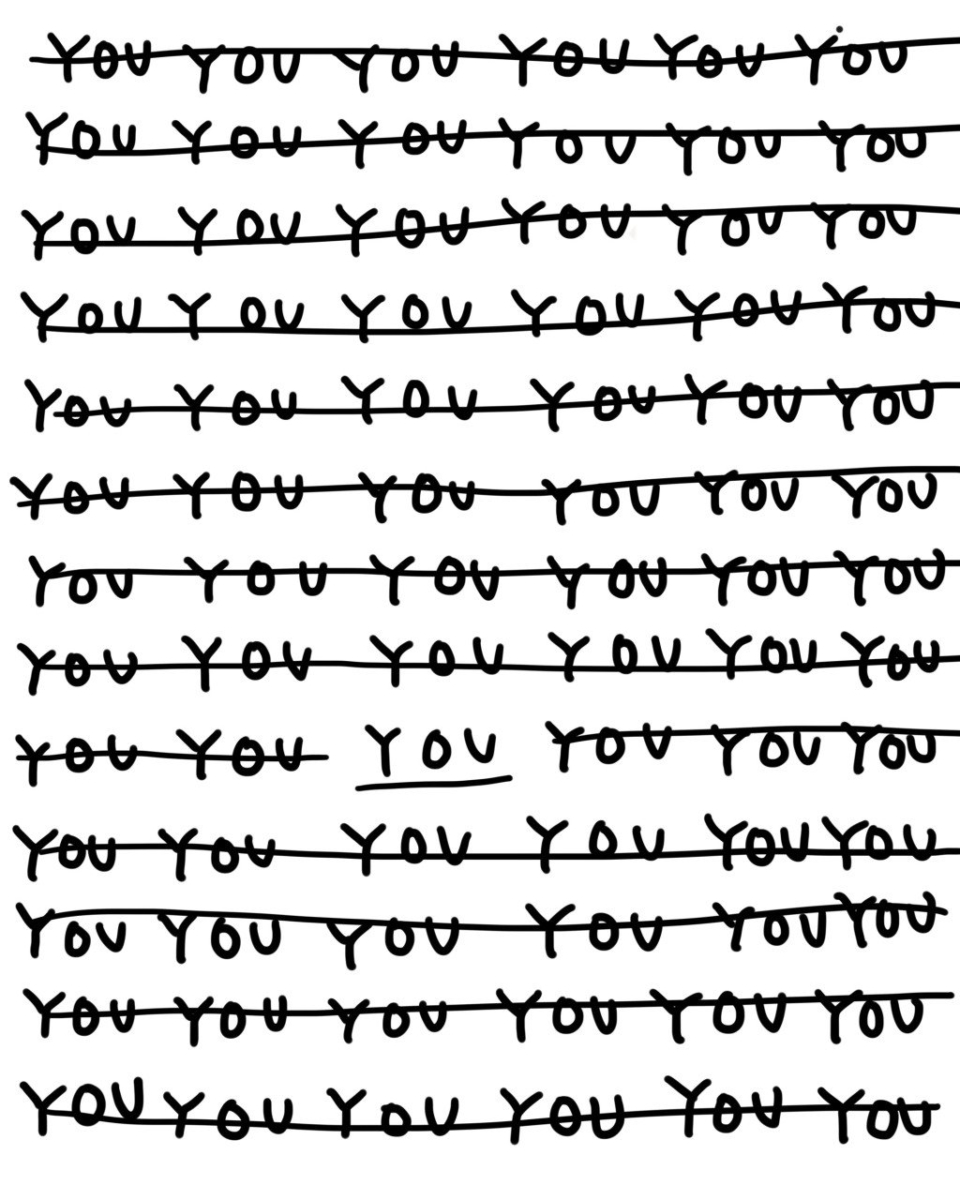
In Conversation
-
NameShantell Martin
-
OccupationArtist
-
LocationNew York City
-
You’re best known for your black and white drawings which often adorn unusual surfaces. How did you land on this medium and these tools?
There is a child in all of us. It doesn’t matter where you’re from, or what your background is, chances are, at some point, you probably picked up a pencil or crayon and explored going off of the page and onto the table, or a wall, onto something you shouldn’t necessarily have been drawing on. There is great benefit in the things that we explored as children and in many ways that inspired the tools that I use.
I think art should be accessible. I hope that when someone sees my drawings they say, “Oh, I could do that.” Sometimes when we look at things that we don’t understand we feel like we can’t take part. I don’t feel like any magic is lost by doing something simple, and so much is gained by inspiring others to create.
-
How do you approach a large scale work?
If I’m working on a large mural, I’ll pace up and down in front of the wall for a while. It’s my way of winding into the work. Someone once observed that it’s like I’m measuring the wall with my body. I’ll pace back and forth until something inside of me just says, “go!” It’s hard to explain but it’s important to get into a mindset where you’re not forcing anything. You have to dial down your thoughts and insecurities and take a backseat so that the work takes over.
-
How does one overcome the struggle associated with being an artist?
It took me many, many years of being a working artist before I felt like I deserved to call myself one. It might have something to do with coming from a working-class background but I felt guilty and like I didn’t deserve to do this thing. It’s important to use your surroundings and the people around you to create your own opportunities. It’s easy to get held back by all the things we don’t have when if you just stopped to recognize what you do have and have access to you’d see a very different path.
It’s also important to recognize the personality that you’re born with. If we want to be better, healthier, nicer, kinder people, we first need to do an audit of our strengths and weaknesses. We have to be willing to uncover our pitfalls and see where we are potentially being selfish. We have to make a dedicated effort to really strengthen the things we are not naturally good at and continue to play to the things that we are.

